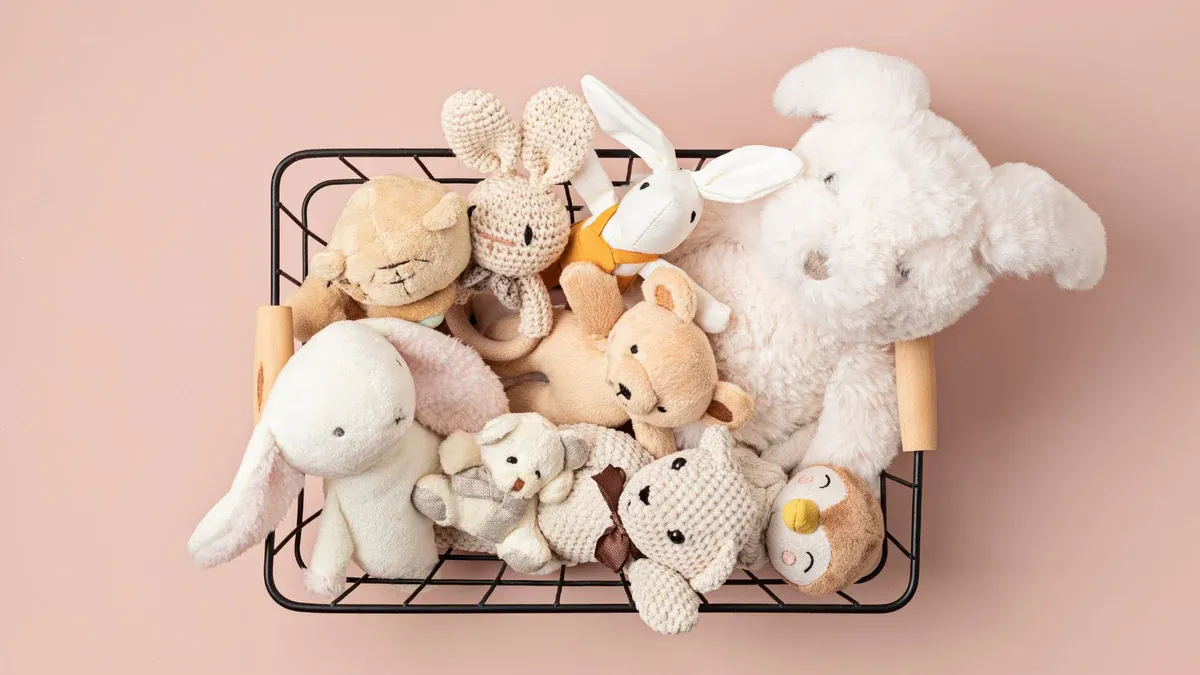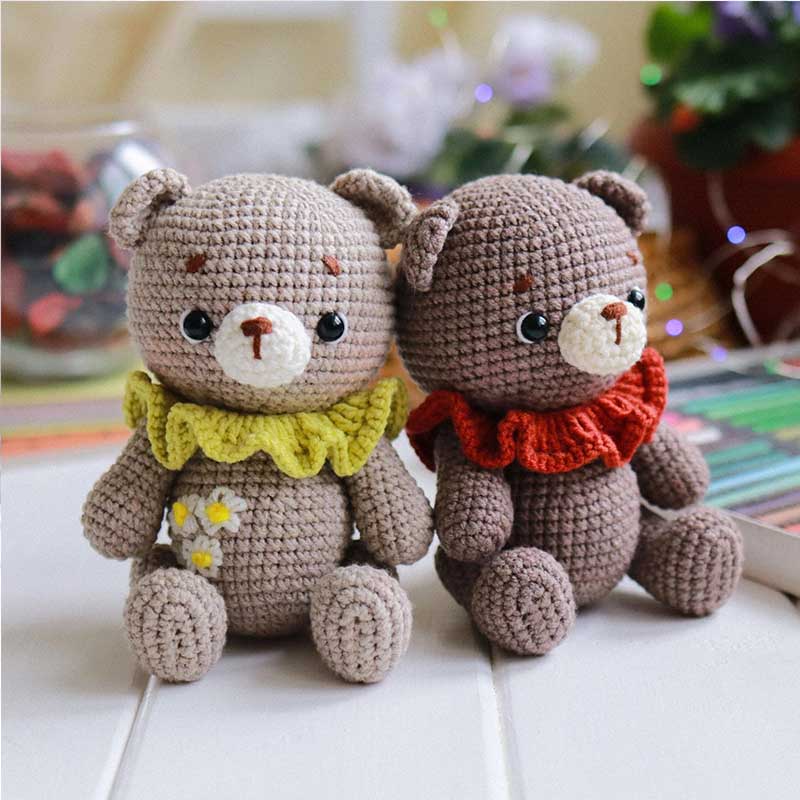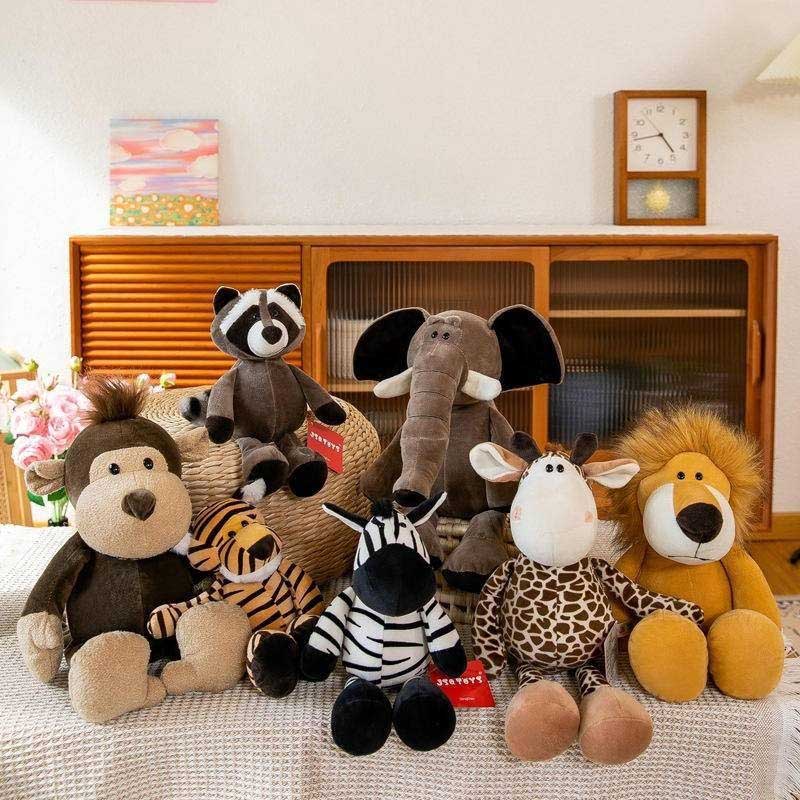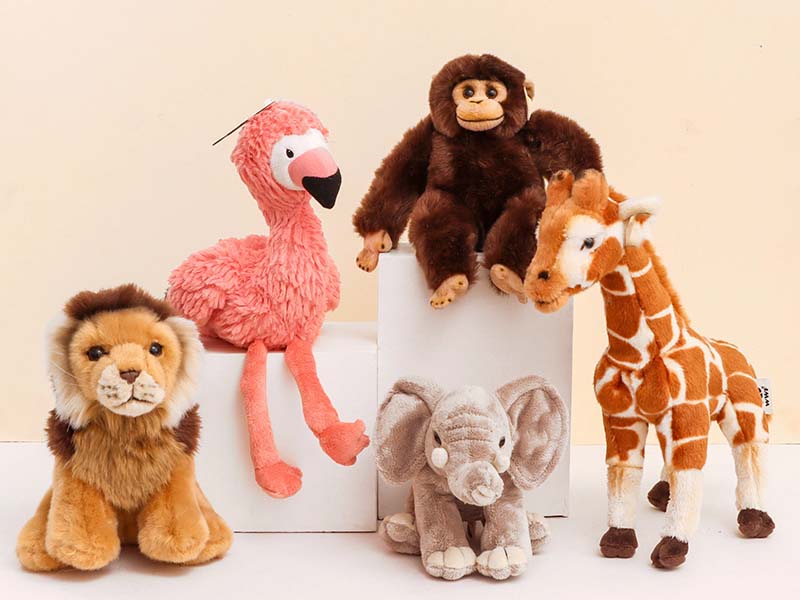Stuffed animals are only as good as the materials inside them. The stuffing determines softness, safety, durability, and even market value. For global buyers, choosing the right filling is not just a design choice—it is a business decision that impacts sales and brand reputation.
The best stuffing for stuffed animals depends on your market needs, customer preferences, and product positioning. Polyester fiberfill is the most common, but cotton, wool, foam beads, plastic pellets, and recycled materials also play important roles. Each option has unique benefits in comfort, cost, and sustainability.
Let’s explore the most common stuffing options and what they mean for wholesalers, retailers, and brand owners.
1. Polyester Fiberfill

Polyester fiberfill is the most widely used stuffing for stuffed animals. It is soft, lightweight, and reliable, which makes it the preferred choice for most plush toy factories. Buyers often choose it because it balances quality with cost, working well for both small toys and large plush dolls.
Polyester fiberfill is the top stuffing for plush toys due to its softness, resilience, and affordability. It holds shape, resists clumping, and provides consistency in mass production. For wholesalers and retailers, it ensures products remain comfortable and visually appealing over time.
This material is also safe and practical. It is hypoallergenic, machine-washable, and suitable for children’s products, which helps brands meet international safety standards such as CE and ASTM. For e-commerce businesses, its durability means fewer customer complaints and returns.
Many buyers also look at sustainable options. Recycled polyester (RPET fiberfill) is becoming popular in Europe and North America. It offers the same performance but with an eco-friendly message, which strengthens brand image in markets where consumers demand greener products.
Key Features of Polyester Fiberfill
| Feature | Benefit for Buyers |
| Softness | Smooth, fluffy texture, perfect for hugging |
| Durability | Keeps shape well, resists clumping |
| Safety | Hypoallergenic and washable |
| Cost Efficiency | Affordable for bulk orders |
| Market Fit | Accepted worldwide, strong eco-friendly versions available |
For international buyers, polyester fiberfill reduces risk because it is always available, easy to source, and works with almost any plush design.
2. Cotton

Cotton has been used in toy making for centuries. It is a natural material that appeals to buyers who want softness with a traditional feel. Unlike polyester, cotton is breathable, which gives stuffed animals a warm and natural texture. This makes it popular for baby toys and premium plush lines.
Cotton stuffing is valued for its natural softness, breathability, and eco-friendly appeal. It is hypoallergenic and safe for sensitive skin, making it an excellent choice for children’s plush toys. However, it is heavier than polyester and may lose shape faster, requiring careful product positioning.
Buyers who sell in eco-conscious markets, such as Europe or Japan, often request organic cotton. It not only provides safety and comfort but also adds strong marketing value. Labels like “organic” or “all-natural” give retailers a competitive advantage, especially in baby toy categories.
The challenge with cotton is cost and durability. It tends to compress more quickly, so it may not work well for very large plush toys. However, when paired with careful stitching and modern production methods, cotton remains a strong option for boutique brands and gift shops.
Key Features of Cotton
| Feature | Benefit for Buyers |
| Natural Softness | Gentle texture, ideal for sensitive skin |
| Breathability | Keeps plush toys feeling fresh |
| Safety | Hypoallergenic and child-safe |
| Eco Appeal | Strong selling point in premium markets |
| Market Fit | Best for baby toys and boutique products |
For buyers targeting parents, cotton stuffing builds trust. It highlights safety, comfort, and natural quality, all of which help increase sales in sensitive product categories.
3. Wool

Wool is another natural stuffing option with a premium reputation. It is strong, insulating, and resilient. While not as commonly used as polyester or cotton, wool appeals to niche markets that value tradition and durability.
Wool stuffing is popular for its natural resilience, ability to retain warmth, and long-lasting performance. It is breathable, naturally flame-resistant, and biodegradable, which makes it attractive for sustainable plush collections.
For buyers, wool offers both performance and storytelling. Retailers can market it as “luxury stuffing” that gives toys a more authentic and natural character. In high-end gift markets or heritage toy lines, wool helps products stand out from mass-market plush.
However, wool has higher costs and can be less consistent in large-scale production. It also requires careful processing to remain safe and soft enough for children’s toys. Despite this, buyers in Europe, Australia, and North America often request wool for limited collections or artisan plush lines.
Key Features of Wool
| Feature | Benefit for Buyers |
| Durability | Holds shape and resists wear |
| Breathability | Keeps toys comfortable |
| Safety | Naturally flame-resistant |
| Eco Appeal | 100% biodegradable, fits green markets |
| Market Fit | Premium and luxury plush segments |
For international buyers, wool is not always about price—it is about positioning. It works best for smaller runs and premium collections where quality storytelling is key.
4. Foam Beads / Plastic Pellets

Foam beads and plastic pellets are very different from fiber-based fillings. They are small, bead-like materials that create a unique weight and feel in plush toys. Instead of fluffy softness, they provide structure and tactile variety.
Foam beads and plastic pellets are used to give stuffed animals flexibility, weight, and a squeezable texture. They are ideal for beanbag toys, stress-relief plushies, and products that need a realistic weight distribution.
For buyers, these fillings allow product diversification. A plush with beads or pellets feels different from a standard stuffed toy, which helps brands expand into niches such as therapy toys, ergonomic cushions, or collectible plush lines.
The key concern is safety. Pellets must be sealed in inner linings to avoid choking hazards, especially for children’s products. At Kinwin, we follow strict international standards, ensuring these materials are safely enclosed and tested.
Key Features of Foam Beads / Plastic Pellets
| Feature | Benefit for Buyers |
| Unique Texture | Provides squeeze and flexibility |
| Weight Balance | Adds realistic or premium feel |
| Market Appeal | Used in therapy, stress, and collectible toys |
| Safety | Requires secure stitching and inner lining |
| Differentiation | Helps products stand out in competitive markets |
For wholesalers and retailers, pellets and beads are less about cost savings and more about customer experience. They add uniqueness that can justify higher pricing.
5. Recycled Materials

Sustainability is becoming a top priority in global markets. Recycled materials, especially RPET fiberfill made from plastic bottles, are increasingly used in stuffed animal production. These options give buyers both performance and environmental credibility.
Recycled stuffing materials provide the same softness and resilience as traditional polyester while reducing environmental impact. They are cost-effective, safe, and align with eco-friendly branding strategies for global toy brands.
Buyers in North America and Europe are especially sensitive to sustainability claims. By offering recycled stuffing, brands can meet consumer demand for greener choices while maintaining safety and comfort standards.
At Kinwin, we see more clients requesting eco-certificates to support their marketing. Using recycled materials also opens doors to new retailers, especially in premium and gift markets where environmental values drive sales.
Key Features of Recycled Materials
| Feature | Benefit for Buyers |
| Eco-Friendly | Reduces environmental footprint |
| Performance | Matches softness and durability of polyester |
| Safety | Certified for children’s use |
| Market Demand | Strong appeal in US and EU markets |
| Branding Value | Supports eco-label marketing campaigns |
For buyers, recycled stuffing is no longer niche—it is a competitive necessity. Retailers and brands who embrace it can build stronger loyalty and differentiate themselves in crowded markets.
Choosing the right stuffing is about more than softness. It defines how your plush toys feel, how long they last, and how well they sell in your market.
Comparison Table of Stuffing Materials
| Material | Best For | Strengths | Challenges |
| Polyester Fiberfill | Mass-market plush toys | Soft, affordable, durable | Not natural |
| Cotton | Baby and boutique plush | Safe, breathable, eco-friendly | Heavier, compresses |
| Wool | Premium and luxury toys | Durable, authentic, sustainable | High cost |
| Foam Beads/Pellets | Stress-relief, collectible, niche toys | Unique feel, adds weight | Needs safety lining |
| Recycled Materials | Eco-conscious global markets | Sustainable, same performance | Slightly higher cost |
By understanding each option, you can choose the best stuffing that matches your brand’s market positioning and customer expectations. At Kinwin, we provide all these stuffing materials with strict safety testing and flexible customization. Whether you want affordability, luxury, or eco-friendly solutions, our factory supports your sourcing needs with reliable quality and on-time delivery.
Contact us today at kinwintoys.com to start your next custom plush project with the best stuffing solutions.







